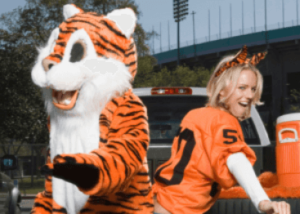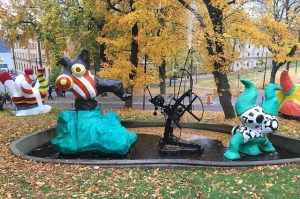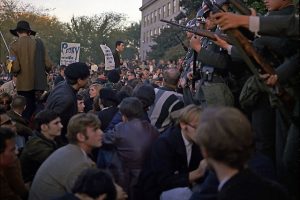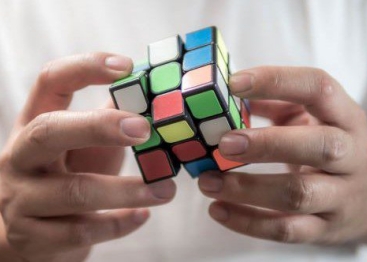10 Disney Characters Fans Still Find Super Annoying
Disney has an undeniable knack for creating iconic characters—whether it’s a fearless princess taking on the world or a talking animal that melts hearts with every line. From Ariel to Olaf, many of these animated stars have cemented their place in pop culture history. But let’s be real: not every Disney character makes us smile. In fact, some of them make us want to mute the screen.
We’re talking about those characters who might’ve been cute at first, but quickly overstayed their welcome. The ones with grating voices, cringe-worthy jokes, or personalities so exaggerated that they hijack entire scenes. You know the ones. They might have started off as comic relief or sidekicks, but somewhere along the way, they became the reason viewers rolled their eyes.
What’s even more surprising is how many of these characters return in sequels—not because they added to the story, but because they were a fan-favorite in marketing. Unfortunately, the second time around, their flaws are turned up to eleven. Suddenly, what used to be a funny quirk becomes a major distraction, derailing the plot and draining the emotional depth of the film.
Take, for example, some of the side characters in recent titles from the Disney+ era, where rapid content production means some personality types are recycled a bit too aggressively. Instead of charm, we get noise. Instead of wit, we get repetition.
It’s almost as if Disney realized this and started toning down the most over-the-top characters in newer releases like Encanto or Turning Red, where the focus returns to relatable storytelling and emotionally grounded characters.
10. Runt Was the Punchline—But the Joke Didn’t Age Well

In Chicken Little, Runt of the Litter is supposed to be the lovable, goofy sidekick—voiced by the always-funny Steve Zahn. But despite his comedic potential, Runt ends up being the target of a long string of cheap fat jokes and anxiety-based gags that feel painfully outdated by today’s standards.
Instead of letting his quirks develop into something meaningful, the movie treats Runt like a walking punchline. His nervous nature is exaggerated to the point of absurdity, and most of his scenes revolve around gags that fall flat. Worse still, his over-the-top reactions often derail the plot and land the group in more trouble than they were already in.
Of course, Chicken Little isn’t exactly known as a high point in Disney’s catalog. The film leans hard on early 2000s tropes, a bizarre alien twist, and mean-spirited humor that hasn’t aged gracefully. While Runt isn’t the most aggravating character ever, he definitely feels more like filler than a fully realized sidekick. His presence pulls focus from the film’s more emotional beats—assuming you can find them.
9. The Over – the – Top Energy of Rhino: A Double – Edged Sword

In the world of children’s animated films, characters brimming with unrelenting energy can be a double – edged sword. On one hand, they can bring a certain vibrancy and excitement to the story. On the other, if not handled well, their energy can quickly become overwhelming. Rhino from Bolt is a prime example of this phenomenon.
Rhino is a hamster with an almost hyperactive level of energy. At times, his boundless enthusiasm can be downright bothersome. Imagine being in a room with someone who just won’t stop talking, moving, and making a fuss. That’s what it’s like when Rhino is on screen. It’s a good thing he’s mostly confined to a plastic ball because if he were free to roam, he might just drive everyone around him to the brink of insanity.
When Rhino first meets Bolt and Mittens, he wastes no time in showing his obsession with Bolt and the so – called “superdog powers.” He’s like a puppy with a new toy, constantly bringing up Bolt’s abilities and idolizing him. While he does manage to be useful in a few scenes, his main role in the movie seems to be as a source of jokes and remarks. Unfortunately, these so – called jokes often fall flat. They lack the wit and charm that would make them truly memorable.
Talking animals have always held a special place in children’s animated films. They bring a sense of wonder and relatability to the stories. When Bolt was released in the early 2000s, talking animal characters were all the rage. Who could forget the talking dogs, cats, and even rodents in other popular films of that era? These characters captured the hearts of children around the world and became beloved icons.
However, not all talking animal characters are created equal. While some, like the lovable Bolt himself, managed to leave a lasting impression on audiences, Rhino is a prime example of a forgettable character. Despite being part of a well – known film, Rhino doesn’t stand out in a positive way. In fact, he’s often seen as one of the film’s weakest aspects.
Despite his lack of depth and overly energetic antics, Rhino has his fans. Some fans must have been so taken with the rotund hamster that he received his own short film in 2009, entitled Super Rhino. This just goes to show that even the most polarizing characters can find an audience.
8. Olaf: When Lovable Turns into a Little Too Much

When Frozen hit theaters in 2013, it didn’t just become another Disney success—it became a cultural phenomenon. The movie sparked sing-alongs, cosplay trends, and even subtle shifts in how Disney defined its own characters. While Anna and Elsa surprisingly didn’t join the official Disney princess lineup, another character, made of snow and pure innocence, stole much of the spotlight: Olaf.
Born from Elsa’s ice magic, Olaf was originally a heartwarming comic relief—a snowman who dreamed of sunshine, loved warm hugs, and radiated childlike wonder. His quirky humor and unpredictable one-liners made him a fan favorite, especially among kids. And let’s be honest, his retelling of the events of the first film in Frozen II is still one of the most clever and self-aware moments in Disney’s recent history.
But here’s where things take an unexpected twist: Olaf might have become a victim of his own popularity.
By the time Frozen II rolled around, Olaf had gone from a delightful sidekick to something more… chaotic. His humor, once refreshing, started to feel forced—an endless loop of punchlines that didn’t always land. Some viewers even felt his presence interrupted the emotional depth of the story. For older audiences, Olaf’s scenes could seem repetitive, like a rerun of a once-great comedy sketch.
Still, it’s fascinating to see how a character like Olaf reflects something deeper about pop culture and storytelling. Sometimes, when a figure resonates so strongly with the audience—especially kids—franchises double down on that success, even if it means straying from the balance that made the original film work so well.
To be fair, Olaf still has a special place in many hearts. His wide-eyed optimism and unfiltered thoughts are part of what made Frozen so unforgettable. But his journey from charming comic relief to overexposed mascot is a curious example of how beloved characters can sometimes become too much of a good thing.
7. B.E.N.: A Comedic Flop That’s Out of Sync in Treasure Planet
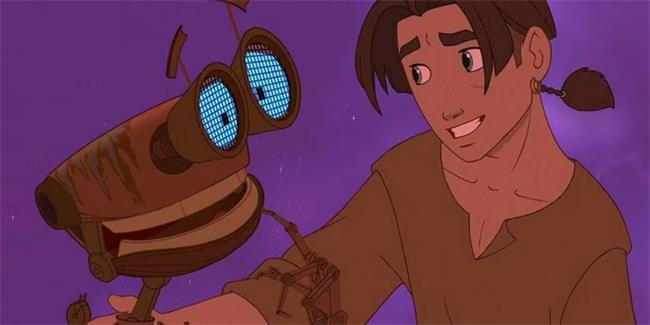
Not every robot character can carve out a place in our hearts as a memorable and endearing part of a story. In the animated film Treasure Planet, B.E.N. (short for Bio – Electronic Navigator) is a prime example of a robot that tries hard to be the comic relief but ends up feeling like a square peg in a round hole.
When Jim Hawkins stumbles upon the forgetful B.E.N., little does he know that this encounter will lead to a chaos – filled adventure. B.E.N., a hyperactive robot who has lost all his memories, is more of a liability than an asset throughout the movie. His constant noisiness and cluelessness cause a slew of problems for the treasure – seeking heroes. His actions often seem to muddy the waters rather than help the group move forward. For instance, his forgetfulness might lead to missed clues or wrong turns in their quest for treasure.
One aspect that somewhat salvages B.E.N. is the voice behind him. Martin Short, a well – known comedic legend, lends his recognizable and exaggerated voice to the character. His voice work gives B.E.N. some amusing moments, with his unique delivery adding a touch of humor. However, this is just a surface – level fix. The character’s fundamental flaws still shine through.
The design of B.E.N. is also worth noting. He’s the only CGI character in the movie, and his design does stand out against the traditional 2D animated characters. But this visual difference doesn’t make him a better – integrated part of the story. Instead, it makes him seem even more out of place.
Despite the efforts to make B.E.N. a source of comedy, his clinginess, high – energy antics, and lack of social awareness make him a hindrance. He clings to Jim and the others in an overly dependent way, which can be suffocating. His ceaseless energy often leads to disruptive behavior, and his social blunders make it hard for the group to take him seriously.
B.E.N. is essentially a clunky addition to what could have been a truly unique and underrated adventure film. His presence detracts from the overall experience rather than enhancing it.
6. Zini: When Comic Relief Goes Completely Off the Rails
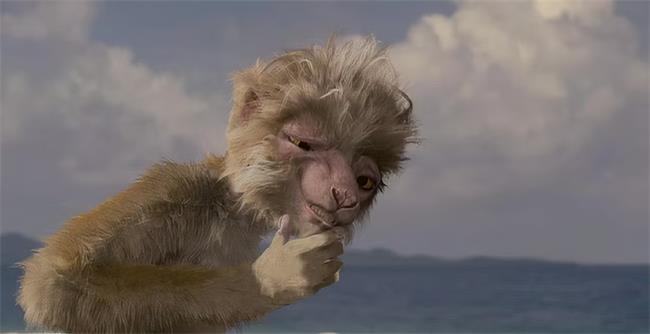
Back in 2000, Disney’s Dinosaur seemed like a technical marvel. With its blend of CGI animation and real-world backdrops, it promised to reshape what animated storytelling could look like. And to some extent, it did. The film earned over $349 million worldwide and was hailed—at least at the time—as a groundbreaking visual experiment.
But fast forward two decades, and the magic has definitely worn off.
The once-stunning visuals now feel clunky and oddly stiff. The plot, while well-meaning, lacks the emotional gravity we’ve come to expect from Disney storytelling. But perhaps the most head-scratching element of Dinosaur is a character named Zini, a sidekick who seemed designed to be the film’s comic spark but ended up sparking mostly confusion—and a bit of secondhand embarrassment.
Zini is a lemur. A very loud, very girl-crazy lemur. His main mission in the film? Finding a mate. That’s it. His obsession with romance—not in a heartfelt way, but in a string of awkward, often cringeworthy wisecracks—feels oddly misplaced in a story that’s otherwise focused on survival and adaptation.
Instead of adding levity, Zini’s presence often derails scenes. His jokes don’t just fall flat—they crash-land. And unlike many of Disney’s more successful comic side characters (think Timon, Mushu, or Olaf), Zini lacks the charm, depth, or even memorable lines to justify his screen time. He becomes the kind of character you tolerate rather than enjoy.
What makes Zini interesting, though, is that he serves as a kind of cautionary tale. In animation, comic relief characters walk a fine line—they need to balance humor with heart. Push too far in either direction, and they risk alienating the audience. Zini missed that balance completely.
5. Sisu’s Modern Humor: A Jarring Note in Raya and the Last Dragon

In the captivating animated film Raya and the Last Dragon, the titular last dragon, Sisu, embarks on a journey with Raya to save their world. When Sisu discovers that humans have shattered the gem she and her siblings created to banish the evil Druun, she’s understandably taken aback. However, as the story unfolds, her personality becomes a bit of a conundrum.
It’s clear that Sisu’s boundless energy is not just a passing reaction but a core part of who she is. Her naivety often leads the protagonists into sticky situations. For example, she might suggest a course of action without fully understanding the potential consequences, getting Raya and the others into trouble. And when the stress starts to mount in these moments, you’d hope that Sisu’s humor could lighten the mood. But sadly, it often fails to do so.
One of the major talking points among viewers of Raya and the Last Dragon is the film’s use of contemporary humor that feels out of place in its fantastical world. Sisu, in particular, is the culprit behind many of these ill – fitting jokes. She refers to her and her siblings’ epic quest to save the world as a mere “group project.” This modern, casual term clashes with the epic and mythical nature of their journey.
Another instance is when Raya and Namaari first meet, and they refer to each other as “dragon nerds.” While it might seem like a lighthearted attempt at humor, it disrupts the otherwise immersive atmosphere of the film. Sisu seems to be the main proponent of such comments, and they do more harm than good to the overall cinematic experience.
The problem is that these modern – day references pull the viewers out of the fantasy world. Instead of being fully engrossed in the story of a dragon, a warrior, and their fight against evil, we’re jolted back to the present day by these out – of – place jokes.
The film could have taken a different approach. It could have used less of this modern humor or even created a more serious dragon character. A dragon with a more solemn demeanor would have fit better in the world of Raya and the Last Dragon. It would have allowed the story to maintain its sense of wonder and adventure without the distractions caused by these incongruous jokes.
4. Terk: When Star Power Isn’t Enough to Make a Character Click
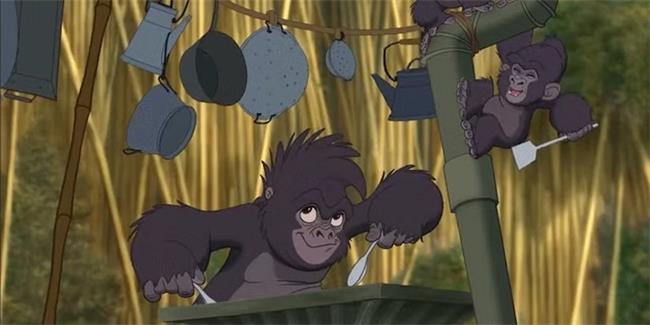
In Disney’s Tarzan (1999), the jungle isn’t just full of swinging vines and heartwarming lessons—it’s also got a sidekick that has left many viewers scratching their heads. Enter Terk, a fast-talking gorilla voiced by Rosie O’Donnell, whose comedic fame in the ’90s was impossible to ignore. On paper, she seemed like a perfect fit: a tough, funny, outspoken companion for the wild and curious Tarzan.
But here’s where things get a little… offbeat.
While Terk may leave a bold impression on the other gorillas in the troop, for audiences, her personality often reads as grating rather than endearing. Her tone is constantly loud, her jokes feel forced, and her know-it-all attitude tends to overshadow Tarzan’s own emotional journey. Rather than supporting his transformation, she often acts like she’s managing him, giving off big-sister energy that quickly drifts into bossy territory.
What makes this more intriguing—and frankly, more bizarre—is how their friendship even begins. Terk doesn’t exactly welcome Tarzan into her world with open arms. In fact, she goes out of her way to exclude him, only warming up when he “proves himself” worthy of joining her social circle. That’s not exactly the wholesome bond most people associate with Disney friendships.
Beyond the strained dynamics, Terk’s reactions to nearly every obstacle rely heavily on groaning, exaggerated sarcasm, or cartoonish outbursts. And while the movie’s animation and soundtrack remain iconic, Terk sometimes feels like a mismatched piece in an otherwise thoughtful puzzle. It’s as if the writers assumed Rosie O’Donnell’s star appeal would carry the character, but the result feels more like a missed opportunity than a scene-stealer.
Terk isn’t a terrible character—far from it. In some ways, she represents a very human response to fear, change, and social pressure. But when a sidekick consistently overshadows the main character’s emotional arc with noise rather than nuance, it’s hard to stay invested.
3. Gurgi: The Unwanted Troublemaker in The Black Cauldron

When we think about Disney animated films, most of us recall heart – warming tales of heroism, love, and magical adventures. However, The Black Cauldron stands out as one of Disney’s biggest flops. Released as Walt Disney Animation Studios’ first PG – rated film, it took a bold step into darker territory. The movie’s dark sequences and creepy visuals were a significant departure from the company’s usual family – friendly fare, presenting a real risk to its reputation.
Even though Disney had a history of dealing with disturbing topics, The Black Cauldron didn’t hold back. It featured a truly terrifying villain in The Horned King, whose menacing presence sent shivers down the spines of viewers. The death – related imagery throughout the film also added to the overall sense of gloom. To counterbalance these morbid moments, the main characters, Taran and Princess Eilonwy, had a rather peculiar companion: a badger – like forest dweller named Gurgi.
Right from the start, Gurgi is nothing but a nuisance. When Taran first encounters him, Gurgi engages in a series of mischievous activities. He steals from the protagonists, blatantly lies to them, and generally makes their already perilous journey even more difficult. For example, his thieving habits might cause them to lose important supplies or tools, while his lies could lead them astray on their quest.
Although Gurgi does make a self – less sacrifice at the end of the film, this act of supposed redemption is not enough to erase the negative impression he has left on the audience. His earlier behavior has already caused too much damage to the group’s progress and morale.
One of the most grating aspects of Gurgi’s character is his voice. He takes the title for the most annoying voice of any character in a Disney property. Yes, even Jar Jar Binks from Star Wars doesn’t come close to the level of irritation that Gurgi’s voice can cause. It’s a high – pitched, nasally voice that seems to grate on the nerves with every word he utters.
At first glance, Gurgi’s character design might seem cute and cuddly. His round, furry body and big eyes might give the impression of a lovable creature. But just a couple of minutes spent in his company will have viewers wishing he had never been introduced into the story. His constant antics and negative impact on the plot make him a character that many fans would rather forget.
2. Valentino: The Talking Goat That No One Really Asked For
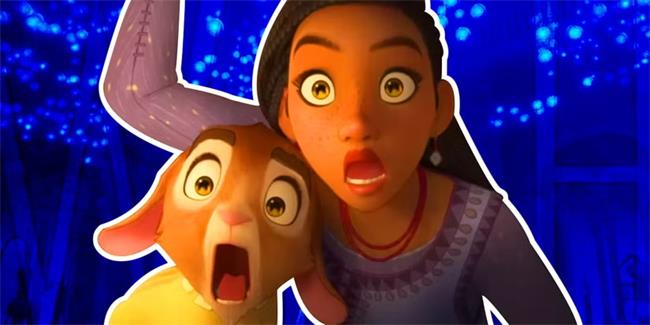
Disney has a long history of creating sidekicks that walk the fine line between adorable comic relief and emotional support. Think of characters like Pascal from Tangled or Abu from Aladdin—silent or not, they add heart to the story. But in Wish, Disney took a leap with Valentino, a talking goat who unfortunately lands far from the charming side of the spectrum.
When Asha wistfully says, “If only we could understand you,” we know what’s coming: the goat is going to talk. And sure enough, once her wish is granted and a magical star intervenes, Valentino gains a voice—a deep, jarring voice that belongs to the ever-talented Alan Tudyk. On paper, the contrast between a cute goat and a surprisingly deep voice might seem hilarious. But in execution? It grows stale, fast.
The problem isn’t just the voice—it’s the writing. Valentino’s dialogue feels like it’s pulled straight from a children’s sketch show, complete with shallow one-liners and predictable punchlines. While Disney typically excels at crafting humor that appeals across generations (see: Genie from Aladdin or Olaf from Frozen), Valentino feels like a character written exclusively to keep kids mildly amused during slow scenes.
Ironically, this narrowed focus means he doesn’t truly connect with any age group. Adults may find his jokes groan-worthy, while even children might forget him moments after the credits roll. There’s no emotional arc, no growth, no standout moment—just a series of punchy lines trying too hard to be funny.
What’s most fascinating is how far Valentino strays from the legacy of Disney’s side characters. Even lesser-known figures—like Scuttle from The Little Mermaid or Meeko from Pocahontas—found ways to become part of the emotional backbone of their films. Valentino, by contrast, feels like a marketing experiment: a quirky idea with no real depth.
1. Hugo: A Jarring Presence in The Hunchback of Notre Dame
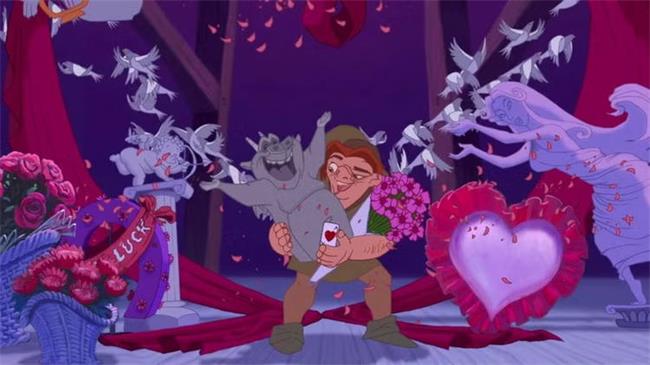
In adapting Victor Hugo’s classic novel The Hunchback of Notre Dame into an animated film, the filmmakers faced a unique challenge: how to infuse lightheartedness into a story filled with disturbing subject matter. While a touch of levity can make dark themes more accessible, the approach taken with the character of Hugo ultimately detracts from the film’s impact.
Quasimodo’s only companions in his isolated bell tower are the gargoyles Victor, Hugo, and Laverne. Interestingly, two of these characters are named after the novel’s author, Victor Hugo. The gargoyles serve as Quasimodo’s inner conscience, helping him navigate his complex emotions and problems. While Laverne often provides sage advice and support, Hugo’s role is primarily that of a comedic relief character. Unfortunately, he fails miserably in this regard.
Voiced by Jason Alexander, famous for his role as George Costanza in Seinfeld, Hugo is constantly making crude and inappropriate jokes. These jokes not only feel out of place but also clash with the dark and serious tone of the film. For instance, while the film manages to balance humor and drama effectively in other scenes—such as Esmeralda and Phoebus’s witty banter when he confronts her in the church—Hugo’s humor falls flat. His crude quips are an unwelcome distraction, pulling viewers out of the immersive experience.
The film’s ability to weave humor into its narrative is one of its strengths. However, Hugo’s contributions are anything but helpful. Instead of adding to the film’s charm, he becomes an annoyance, making viewers wish they could fast – forward through his scenes. His presence is not just a minor inconvenience; it’s a significant drawback that diminishes the overall quality of the film.
Hugo’s character is a reminder of how important it is to carefully consider the tone and context when adding comedic elements to a story. Poorly executed humor can undermine even the most compelling narratives, and Hugo’s crude jokes are a prime example of this.







